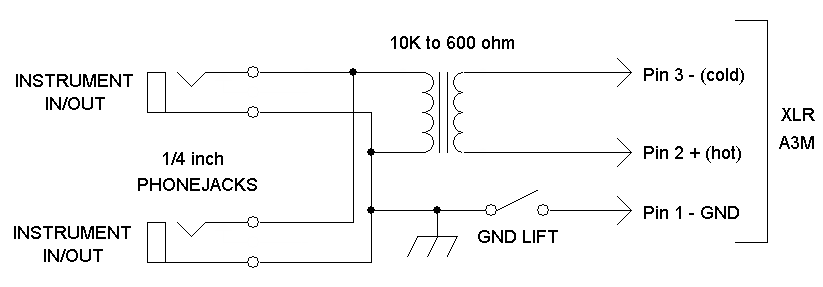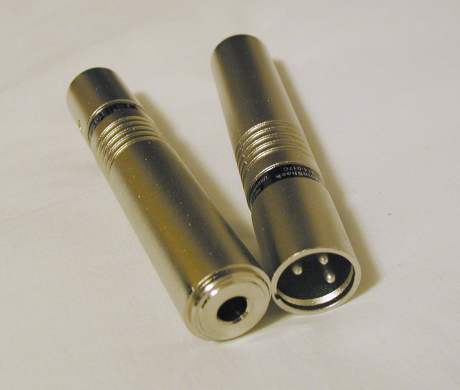
(and why you need to use it)
December 10,2006
| A direct box is a must for recording studio applications or sound amplification applications when you need to interface an unbalanced audio source such as a keyboard, guitar or amplifier, drum machine, etc. to a microphone input of a mixer or wherever you need to isolate the source from hum and ground loops or to match impedances and levels. |
Most 1/4 inch connectors are unbalanced high impedance circuits, and microphone inputs on mixers or recorders are balanced 150/600 ohm inputs. You cannot just make a cable and plug it in between an unbalanced high impedance source and the microphone input. The levels will not be sufficient or too distorted and you will probably have some AC hum on the input. You could damage any phantom power circuits in your mixer.
A schematic of a typical direct box looks like the following:

Most direct boxes have two 1/4 inch jacks that allow you to tap into a guitar, bass, etc. before going to an amplifier. This will give you a microphone connector so you can take a standard microphone cable and plug it into your recording equipment or mixer. Most good direct boxes also have a ground lift switch to isolate the ground in cases where AC hum is noticeable. Operate the switch either way in order to minimize any hum. The typical impedance of the unbalanced side is anywhere from 10,000 ohm to 50,000 ohms. The secondary can be anywhere from 150 to 600 ohms. The transformer is specially made to pass frequencies from 20 HZ to 20,000 HZ. There is usually some loss in the transformer, anywhere from 4 to 20 db. This is usually not a problem. Some more expensive direct boxes also have an attenuation switch to reduce high level signals such as speaker outputs to usable level. Some will switch -10, -20, or -30 db into the circuit. Other direct boxes may contain two separate audio channels.
Good direct boxes cost about US$40.00. A typical high quality direct box looks like this:

Click here to purchase from Musician's Friend
Radio Shack may still sell a US$20 unit (part number 274-017C) that looks like this:

The bandwidth of these units are not "quite" as good as the more expensive ones but in most cases will perform satisfactorily. Especially in live audio performances.
Here's a dual direct box that I highly recommend:
